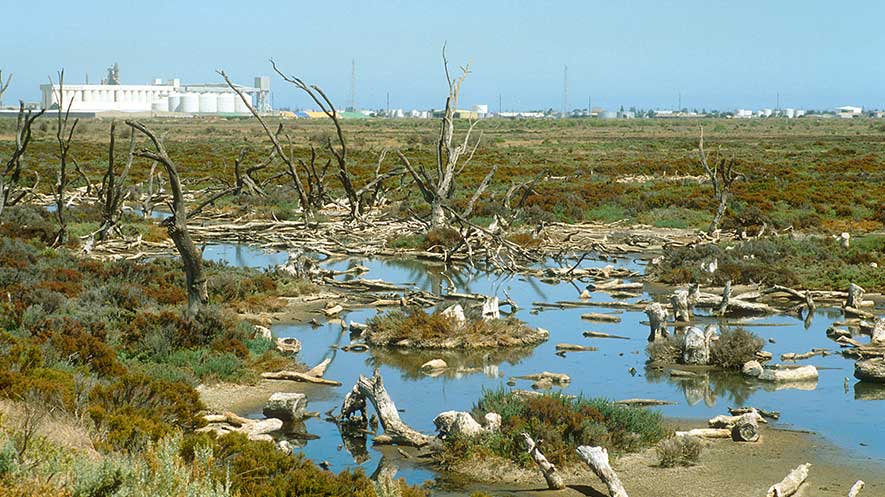According to an article by Michael Slezak appearing in The Guardian, climate change and El Niño have caused the worst mangrove die-off in recorded history, stretching along 700km of Australia’s Gulf of Carpentaria, an expert says.
The mass die-off coincided with the world’s worst global coral bleaching event, as well as the worst bleaching event on the Great Barrier Reef, in which almost a quarter of the coral was killed – something also caused by unusually warm water. And last week it was revealed warm ocean temperatures had wiped out 100km of important kelp forests off the coast of Western Australia.
To assess the damage to the mangroves, Norm Duke, an expert in mangrove ecology from James Cook University, flew in a helicopter over 700km of coastline, where there had been reports of widespread mangrove die-offs. He was “shocked” by what he saw. He calculated dead mangroves now covered a combined area of 7,000 hectares, as was first reported by the ABC on Sunday. That was the worst mangrove mass die-off seen anywhere in the world, he said. “We have seen smaller instances of this kind of moisture stress before, but what is so unusual now is its extent, and that it occurred across the whole southern gulf in a single month.
The devastated mangrove forests played an essential role in the region’s ecosystem, Duke said. They were nurseries for many fish species. “But we also think of them as kidneys – as water filters and purifiers,” he said. As water from rivers and floodplains runs into the ocean, mangroves filter a lot of sediment, and protect coral reefs and seagrass meadows. That service would be lost in the areas affected by die-off. “There are already anecdotal reports of marine life dying and piles of dead seagrass washing up on the shore,” he said. “If that’s true, then turtles and dugongs will be starving in a few months.” And it would get worse over the coming years as the roots of the dead plants rotted.
“The problem is the growth rate isn’t high enough to stabilize the environments,” Duke said. “In five or six years’ time, the roots will break down and those sediments will become destabilized. And that will threaten the near-shore habitats of seagrass and coral.” The mangroves also protect the shoreline and coastal ecosystems from storms and tsunamis. Absorbing waves that hit the coast helps limit the impact of storms and rising sea levels. “We need that resilience and protection of the shoreline so we can slow down the effects of sea level rise,” he said.
Read the full article here



